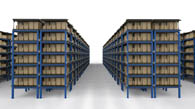Understanding the Basics of Maritime and River Shipping
In the world of logistics and transportation, understanding the differences between maritime and river shipping is essential for businesses and individuals alike. Both methods play a crucial role in transporting goods efficiently, but they operate under different principles and have distinct advantages and disadvantages.
Maritime Shipping: The Oceans' Route
Maritime shipping refers to the transportation of goods by boat, primarily through the world's oceans. This method is ideal for large-scale shipments, such as goods moving from manufacturing plants to consumers across continents. Key features of maritime shipping include:
Wide Coverage: Shipping routes span oceans, covering vast distances and diverse regions.
Efficiency: Boats are designed to carry large quantities of cargo, reducing costs per unit.
Flexibility: Shipping schedules can be adjusted based on demand and weather conditions.
However, maritime shipping can be affected by weather conditions, such as storms or strong winds, which may delay deliveries or require rerouting.
River Shipping: The Waterways' Route
River shipping, on the other hand, involves transporting goods along rivers, which can be faster and more cost-effective than maritime routes for certain routes. Key advantages of river shipping include:
Speed: Goods can move quickly through locks and canals.
Cost-Effective: River routes often have lower operational costs compared to maritime shipping.
Environmental Friendliness: River shipping can be more sustainable, as it avoids the environmental impact of shipping goods across oceans.
Despite its benefits, river shipping is limited to specific waterways and may face challenges such as congestion or the need for specialized equipment.
Choosing the Right Shipping Method
When deciding between maritime and river shipping, businesses should consider factors such as the distance to be covered, the type of goods being shipped, weather conditions, and the availability of infrastructure. For example, goods requiring rapid transit might benefit from river shipping, while those requiring long-haul delivery might opt for maritime shipping.
In conclusion, both maritime and river shipping offer unique advantages depending on the specific needs of the transportation task. By understanding the strengths and limitations of each method, businesses can make informed decisions that optimize their logistics and reduce costs.
